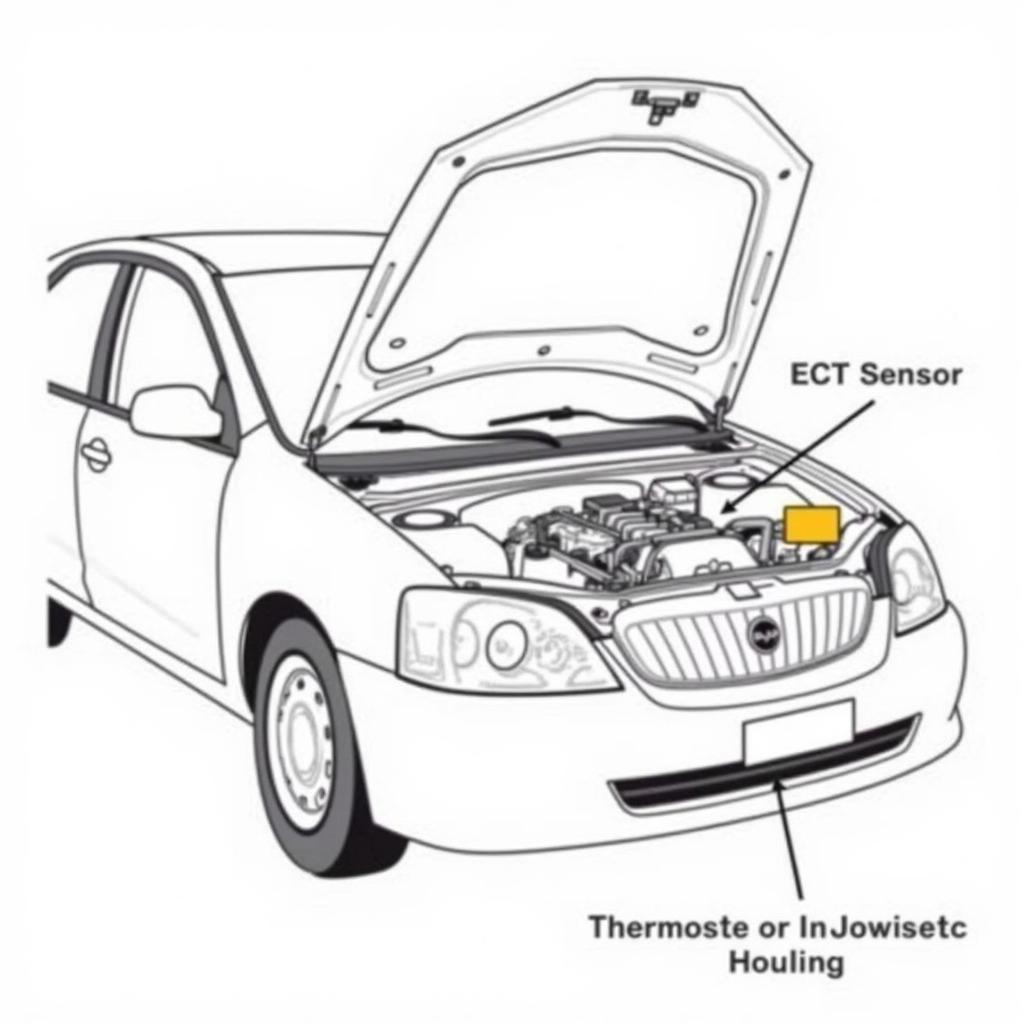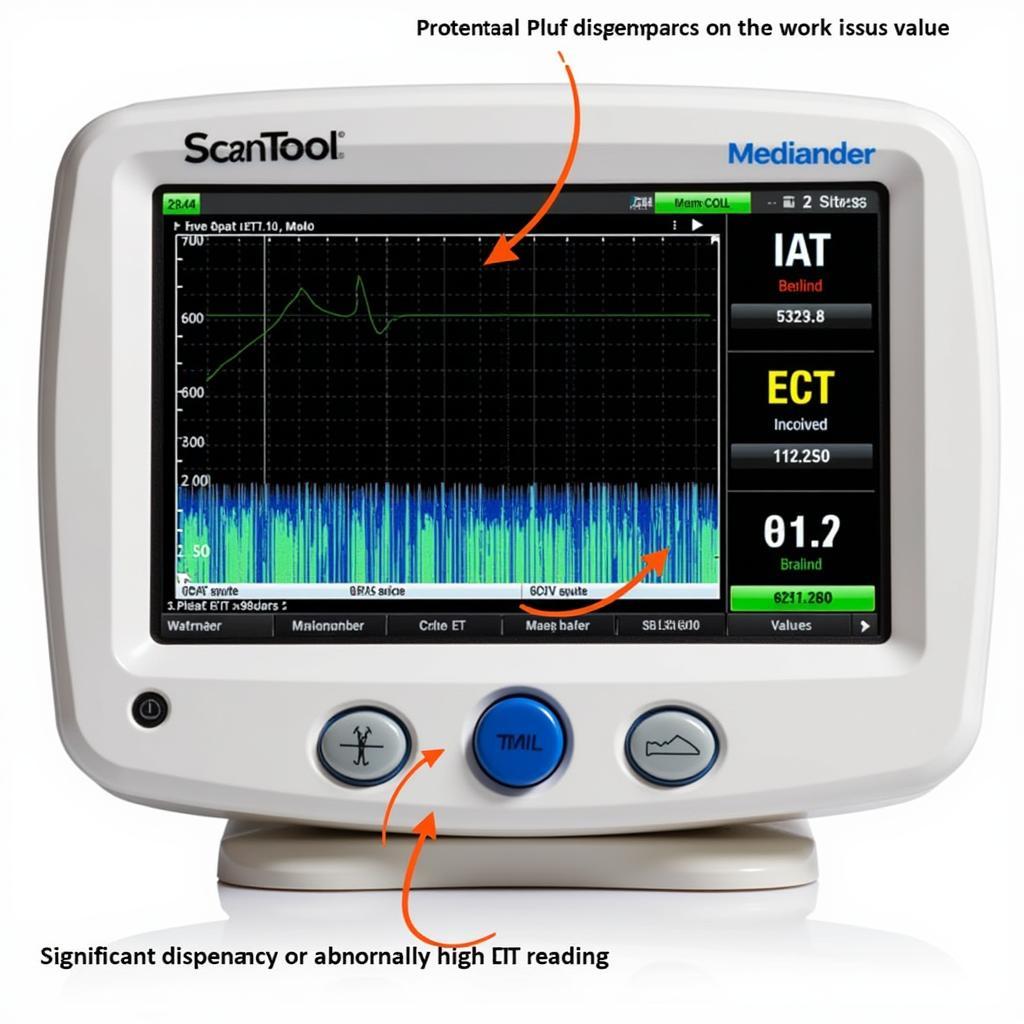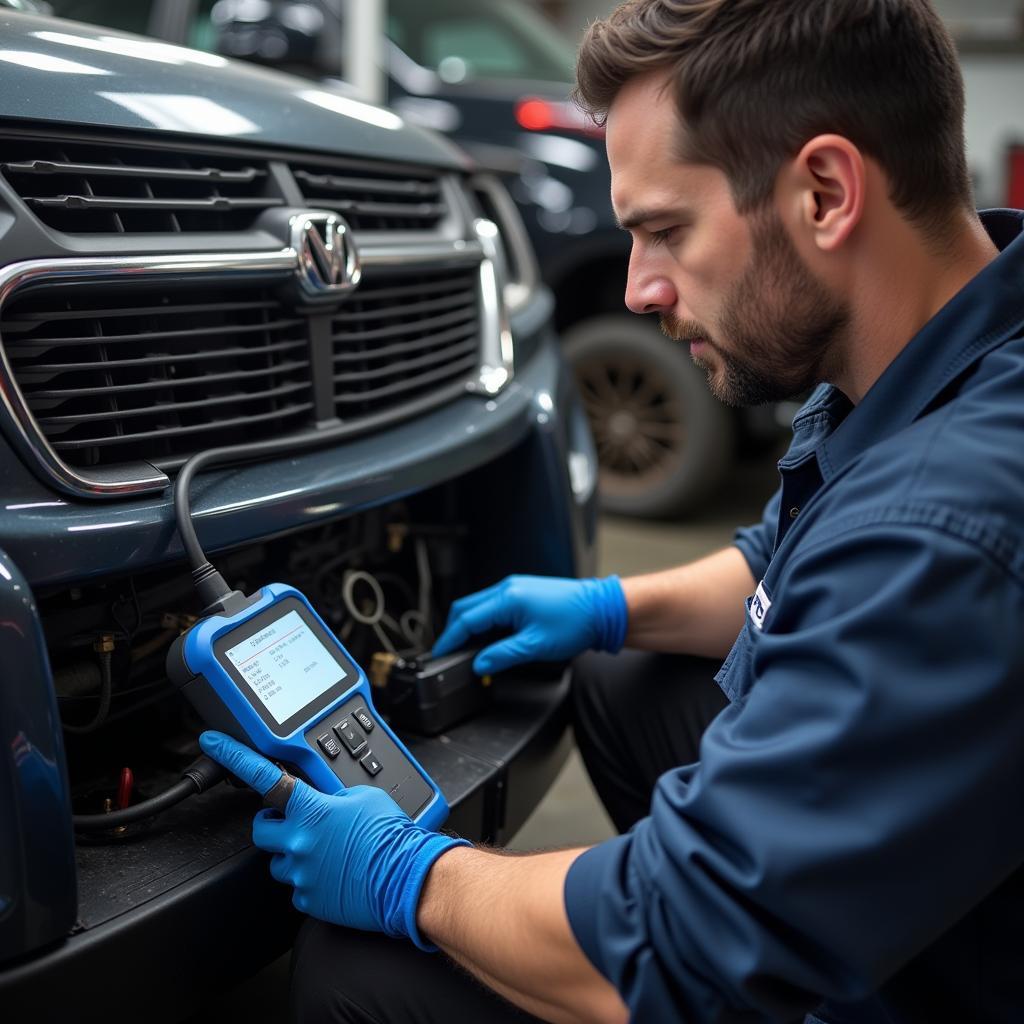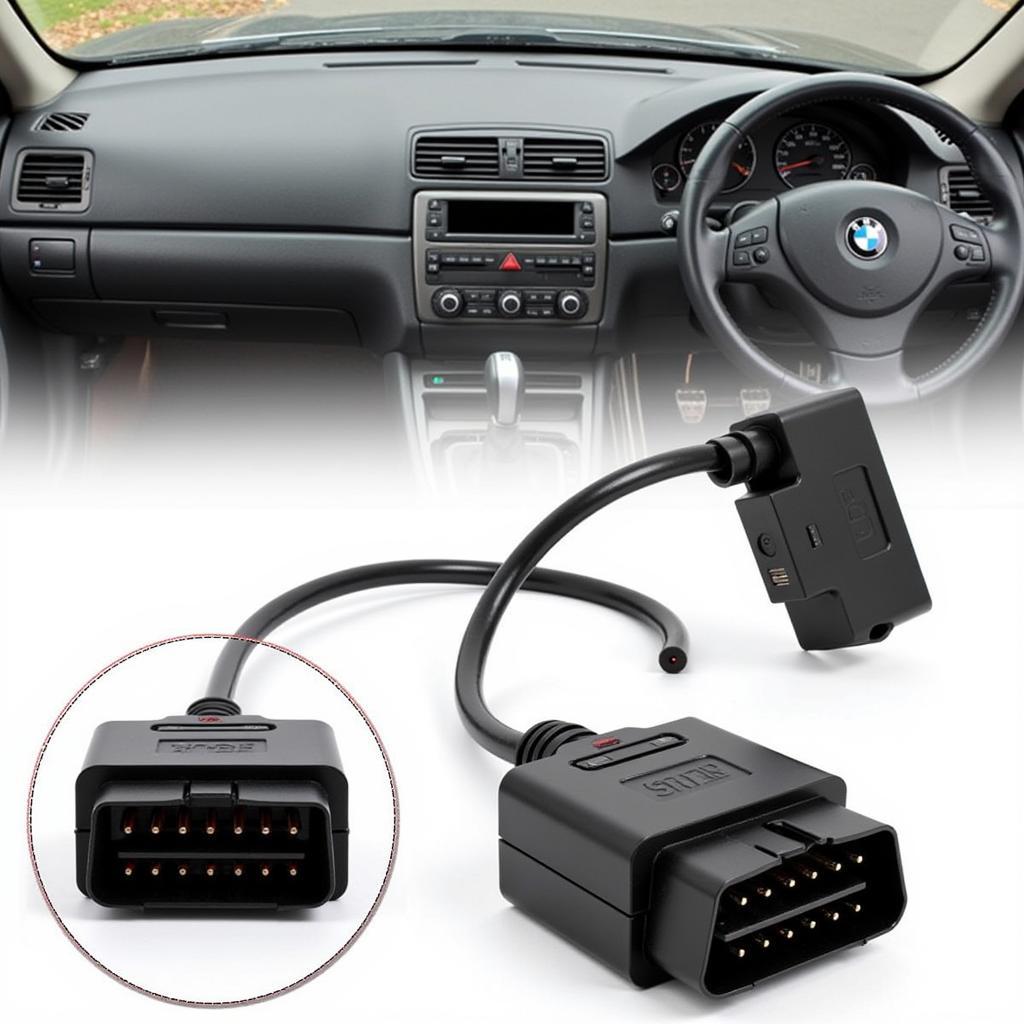When it comes to diagnosing engine problems, your scan tool is your best friend. Among the many parameters it can read is the comparison between air intake temperature (IAT) and engine coolant temperature (ECT). This data can be crucial in identifying a variety of issues, from faulty sensors to cooling system malfunctions. This article will delve into the importance of comparing these two readings, how to interpret the data, and what common problems this comparison can help diagnose.
One of the most valuable features of a modern hyper tough all system automotive scan tool is its ability to display live data from various sensors. Understanding this data can be a game-changer when it comes to diagnosing complex engine problems.
Understanding Air Intake Temperature (IAT)
The air intake temperature sensor, often located in the intake manifold or air filter box, measures the temperature of the air entering the engine. Cooler air is denser, meaning it contains more oxygen, which leads to a more efficient combustion process and better fuel economy. The engine control unit (ECU) uses the IAT sensor readings to adjust the air-fuel mixture and ignition timing for optimal performance.
Understanding Engine Coolant Temperature (ECT)
The engine coolant temperature sensor, typically located near the thermostat housing, monitors the temperature of the engine coolant. This information is vital for the ECU to regulate the engine’s operating temperature, ensuring it warms up quickly and maintains a consistent temperature for optimal performance and emissions control.
Why Compare Air Temp and Coolant Temp?
While each sensor plays a distinct role, comparing their readings can provide valuable insights into the overall health and performance of your engine. Here’s why:
- Identify Faulty Sensors: A significant discrepancy between the IAT and ECT readings when the engine is cold could indicate a faulty sensor.
- Diagnose Cooling System Problems: If the ECT reading is abnormally high while the IAT remains normal, it could point to problems within the cooling system itself, such as a malfunctioning thermostat, a failing water pump, or a clogged radiator.
 IAT and ECT Sensor Location
IAT and ECT Sensor Location
Interpreting Scan Tool Readings: What to Look For
When comparing the IAT and ECT readings on your scan tool, here’s what to focus on:
- Engine Cold: When the engine is cold, the IAT and ECT readings should be relatively close. A significant difference could indicate a faulty sensor.
- Engine Warm: Once the engine reaches operating temperature, the ECT reading should stabilize within a specific range (typically around 195-220°F or 90-104°C). The IAT reading, however, will fluctuate depending on factors like ambient temperature, engine load, and driving conditions.
- Sudden Changes: Sudden, unexplained changes in either reading, especially during normal driving conditions, could signal a problem.
Common Problems Revealed by IAT and ECT Comparison
Here are some common engine problems that a comparison of air intake and coolant temperatures can help diagnose:
- Faulty Thermostat: A stuck-open thermostat can prevent the engine from reaching optimal operating temperature. This will be evident by a low and slowly rising ECT reading, even when the IAT reading indicates the engine is warm.
- Clogged Radiator: A clogged radiator restricts coolant flow, leading to overheating. This will show as a high ECT reading, potentially exceeding the normal range, while the IAT reading remains relatively normal.
- Malfunctioning Water Pump: A failing water pump will also hinder coolant circulation, causing a similar reading pattern to a clogged radiator: a high ECT and a normal IAT.
 Scan Tool Displaying IAT and ECT Readings
Scan Tool Displaying IAT and ECT Readings
Beyond Diagnostics: The Importance of Accurate Readings
Accurate IAT and ECT sensor readings are not just crucial for diagnostics; they also play a vital role in:
- Fuel Efficiency: A properly functioning IAT sensor ensures the correct air-fuel mixture, optimizing combustion and fuel economy.
- Emissions Control: The ECU relies on accurate ECT readings to manage emissions systems, such as the evaporative emissions system and the exhaust gas recirculation (EGR) system.
- Engine Performance: Both sensors contribute to the ECU’s ability to fine-tune ignition timing and other parameters, directly impacting engine performance, throttle response, and overall drivability.
Conclusion
Understanding the relationship between air intake temperature and engine coolant temperature, and knowing how to interpret their readings on a scan tool, can be incredibly valuable for diagnosing and resolving a range of engine problems. By recognizing the significance of these two parameters, you can take proactive steps to ensure your vehicle’s optimal performance, fuel efficiency, and longevity.
For further assistance with scan tool diagnostics or any automotive repair needs, feel free to contact ScanToolUS at +1 (641) 206-8880 or visit our office at 1615 S Laramie Ave, Cicero, IL 60804, USA.
FAQs
1. Can a faulty IAT sensor cause my check engine light to come on?
Yes, a malfunctioning IAT sensor can trigger the check engine light. The ECU will detect unusual readings and log a corresponding diagnostic trouble code (DTC).
2. How often should I check my IAT and ECT readings?
It’s a good practice to monitor these readings periodically, especially if you suspect a problem with your engine’s temperature or performance.
3. Can I clean or replace the IAT and ECT sensors myself?
While it’s possible to clean or replace these sensors yourself, it’s essential to consult your vehicle’s repair manual and follow the correct procedures.
4. Can extreme temperatures affect IAT and ECT readings?
Yes, extreme temperatures can influence readings. For instance, extremely cold weather can lead to a slower warm-up time, reflected in a lower ECT reading.
5. What is the difference between a scan tool and an OBD-II reader?
While both can read and clear diagnostic trouble codes, a scan tool offers more advanced features like live data streaming, which is essential for comparing IAT and ECT readings.



Pingback: Scan Tool Stuck: Causes and Solutions - Car Scan Tool